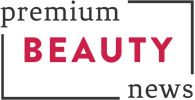This expectation is pushing beauty brands towards new sustainable innovations, such as waterless beauty, upcycling, carbon neutrality and reusable or refillable packaging solutions. Looking at recent innovations from around the world, we explore what sustainable solutions facial skincare brands need to implement to respond to this demand and succeed in 2021.
Offer refillable packaging formats
In the past few years, there has already been increasing pressure on beauty brands to create reusable or refillable packaging formats. These are helping to reduce overconsumption and promote a more circular economy as well as offering a new element of value.
“Run out. Refill. Reuse.” This Tata Harper recyclable refill pod locks into a refillable Water-Lock Moisturizer jar. It’s a lightweight, silicone-free dehydrator, which primes and smoothes the skin with orange peptides, pomegranate spheres and hyaluronic acid.
Upcycle from organic waste
Using waste can lower the cost of goods, making it an even more compelling reason for brands to adopt this eco-friendly practice.
This product is an insect-infused skin oil that involves the use of insects to upcycle organic plant waste. The skin oil is made up of 20% black soldier fly larvae oil – one of the world’s most sustainable and nutrient-rich insects – to support skin health in a unique way.
For example, Haeckels’ Bio Restore Membrane is a waste-free sheet eye mask that biodegrades after use. The membrane is not made but grown using agar cultivated from the cell walls of seaweed. It is delivered in compostable packaging, with a reusable Petri dish for solubilising the eye masks.
Go local/use natural ingredients
The pandemic has reinforced the importance of buying locally-produced beauty ingredients for French consumers, as a significant majority of them prefer using locally sourced beauty and personal care products from their own region, and more than half of these would pay more for these products.
French independent brand L’Accent has created a fusion of skincare and makeup, calling it “dermo-maquillage”. L’Accent hand-picks chestnuts from the mountains of the Cévennes in South-Central France and grinds them into a fine, tinted moisturizing powder, naturally rich in antioxidants.
Makesenz creates organic, local, zero waste, natural products. Their mission is to create “less, but better”, which will appeal to the almost six in ten French beauty and personal care consumers who are concerned that the ingredients used in natural products are not sustainable
This balm is made from the beeswax generated by the urban bees kept on top of the Tate Modern and Fortnum & Mason in London.
Be carbon neutral
Carbon neutrality is a holistic approach towards reducing the brands’ impact on the environment and the climate. Looking at the entire supply chain, more and more indie brands are introducing carbon neutral products, aiming to offer both benefits for consumers and the planet alike. This is where a lot of consumer focus will be in the next couple of years.
Bolt Beauty creates biodegradable, refillable and carbon neutral skincare products. Their skincare capsules are sold in refillable ‘home jars’ containing 100 drops full of cleansing gel for “clean, soft, smooth skin”. Each skincare drop is made from sustainable seaweed and is fully biodegradable. The brand’s jars are created ‘for life’, and the Bolt drops are refillable from compostable bags.
Australian brand Sukin, a natural, vegan and cruelty-free brand uses carbon offsetting to produce carbon neutral products. This means that the brand offsets each carbon emission that they produce, from the emissions made when transporting their products to store, to running the machines that make their products, to the electricity that powers their offices. Sukin claims that these processes ensure the company’s activities are 100% counteracted and do not leave a carbon footprint on the earth.
Waterless / water saving formulations
As consumers strive to live more sustainably, brands are innovating with water-free formulations to help with the effort. Brands have a real opportunity to bring innovation to this new category, satisfying consumers’ need to do more and be better in ways that are truly sustainable. According to Mintel Global New Products Database (GNPD), nearly half of waterless beauty and personal care products launched in 2019 were from skincare.
When thinking of a waterless approach, solid bar formats are the natural place to start. A much more concentrated formulation in terms of ingredients, solid formats can have a lower cost per use than traditional water-based formats, particularly in the haircare and bath/shower categories.
A vegan cosmetic product, this solid elixir from Pachamamai has natural active ingredients, which are known to moisturize, soften and nourish the skin.
Outside of solid bar formats, powder and stick products are growing. These can be formulated without water, creating more concentrated formats that are easy to use on the go and when traveling. Eliminating water from formulations can help with stability of ingredients, in particular those that spoil or oxidise easily like vitamin C.
The Enzyme Cleanser is a multi-purpose cleansing foam and exfoliator. The fine-grained powder only needs a few drops of water added to transform into a soft cleansing foam, which treats oily and combination skin.
In 2020, the soap, bath and shower category has overtaken skincare when it comes to waterless features, thanks to all the cleansing products launched during the pandemic. This might be the next product category due an ‘eco makeover’.





















